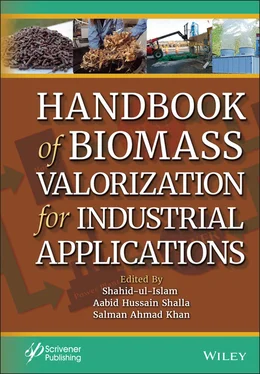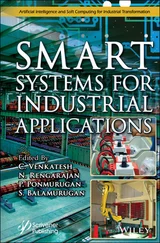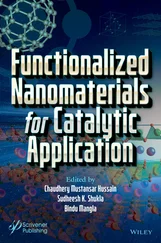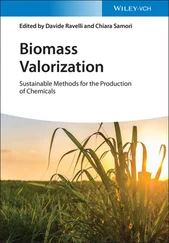Handbook of Biomass Valorization for Industrial Applications
Здесь есть возможность читать онлайн «Handbook of Biomass Valorization for Industrial Applications» — ознакомительный отрывок электронной книги совершенно бесплатно, а после прочтения отрывка купить полную версию. В некоторых случаях можно слушать аудио, скачать через торрент в формате fb2 и присутствует краткое содержание. Жанр: unrecognised, на английском языке. Описание произведения, (предисловие) а так же отзывы посетителей доступны на портале библиотеки ЛибКат.
- Название:Handbook of Biomass Valorization for Industrial Applications
- Автор:
- Жанр:
- Год:неизвестен
- ISBN:нет данных
- Рейтинг книги:4 / 5. Голосов: 1
-
Избранное:Добавить в избранное
- Отзывы:
-
Ваша оценка:
- 80
- 1
- 2
- 3
- 4
- 5
Handbook of Biomass Valorization for Industrial Applications: краткое содержание, описание и аннотация
Предлагаем к чтению аннотацию, описание, краткое содержание или предисловие (зависит от того, что написал сам автор книги «Handbook of Biomass Valorization for Industrial Applications»). Если вы не нашли необходимую информацию о книге — напишите в комментариях, мы постараемся отыскать её.
BIOMASS VALORIZATION
INDUSTRIAL APPLICATIONS
The handbook provides a comprehensive view of cutting-edge research on biomass valorization, from advanced fabrication methodologies through useful derived materials, to current and potential application sectors.
Audience Handbook of Biomass Valorization for Industrial Applications
Handbook of Biomass Valorization for Industrial Applications — читать онлайн ознакомительный отрывок
Ниже представлен текст книги, разбитый по страницам. Система сохранения места последней прочитанной страницы, позволяет с удобством читать онлайн бесплатно книгу «Handbook of Biomass Valorization for Industrial Applications», без необходимости каждый раз заново искать на чём Вы остановились. Поставьте закладку, и сможете в любой момент перейти на страницу, на которой закончили чтение.
Интервал:
Закладка:
1.3.5 Design Challenges of Photocatalytic Reactors
Designing a suitable reactor set up for a photocatalytic reaction is not an easy task due to lack of proper research about various challenges and section criteria. Scaling and optimization studies related with photocatalysis are not elaborated in order. Only oxidation and reduction steps are considered while material balance is not into the real manner along with unidentified side reactions or by-products. The necessary information regarding side products is still missing in the literature related with such reactor design studies. Therefore, the researchers should be focused on suitable reactor kinetics so that hidden valuable aspects can come into the scene and poisoning of photocatalysts can be avoided to enhance the activity or stability of those catalysts will for lowering down the activation energy [5].
Further, the design of any reactor is dependent upon the rate limited step in the reaction mechanism. Separation of the catalyst from reaction mixture is also a quite challenging task but fluidized bed and immobilized catalysts are found to be two possible solutions for resolving separation issues. On a small scale, a laboratory set up has been installed to carry out research on slurry reactors which can be an option to raise the performance of system than immobilized catalytic reaction system. Rather, the researchers are working to minimize water and air pollution problems occurring during process but large scale applications on optimization of reaction systems are still absent.
For continuous flow in organic synthesis, there are some types of reactors for multicomponent-multiphase reactions such as single channel reactor, membrane micro reactor, and falling film micro reactor. In some cases, a photocatalytic pervaporation reactor has been designed for enhancing the yield of vanillin as double. On the other hand, Alfano et al . [18] complied valuable information about reactor design for the photocatalytic degradation of contaminants present in wastewater streams via heterogeneous photocatalysis mechanism.
Over oxidation of the reactant is also an important lack in photocatalysis which is responsible of lowering down the selectivity even high conversion. It is necessary to attain high selectivity and high conversion in such conditions but this issue can be resolved by involvement of flow reactors as batch reactor are not capable for achieving desired output. Therefore, a research should be done in the direction of flow reactors to gain complete conversion or other necessary products because continuous output is achieved all time in flow reactors.
For designing reactors for photocatalysis, the selection of light source (UV, visible, natural solar, etc.) is important consideration to industries for the maximization of desired products. Using mercury or xenon lights are conventional in nature in photocatalysis but their efficiency is very low. For reactions in microfluidics reactors, light emitting diode is used in photocatalysis which is quite popular nowadays because it minimizes heat loss and optimizes energy. Quartz and glass materials are very common in making photocatalytic reactor. Quartz utilizes both UV and visible light radiations for reactions below 170 nm optical wavelength. But, both glass and quartz are not really stable under some specific temperature and alkaline conditions. Therefore, some polymeric materials are used for building photocatalytic reactors such as PFA, FEP, PDMS, and PMMA. Among these, PFA and PEP as fluoro materials showed better performance in terms of activity, stability, and cost. Moreover, as a big advantages of these materials is to absorb both types of light radiations (visible and UV). Fabrication of photocatalytic reactors with these materials is easy and low cost which provides better stability also.
1.3.6 Solar Fuel Synthesis Through Photocatalysis
To reduce the dependency on fossil fuels and environmental pollution caused due to consumption of these fuels, renewable fuel production from biomass is in great demand and gained the focus of attention of academic and industrial researchers since the last decade.
In this process, water is used on a semiconducting material for photocatalyzing to generate hydrogen and oxygen [5]. In electrochemical cell, an electrode made of TiO 2is connected to black platinum electrode. Due to visible incident light, the flow of electrons starts in the direction from TiO 2electrode to black platinum electrode and at this point, the generation of hydrogen and oxygen can be done at cathode and anode, respectively. According to heterogeneous photocatalysis mechanism, oxygen is produced by oxidizing water through photo generated holes which acts as electron scavengers and rest electrons are responsible to generate hydrogen in reduction reaction. Research on photocatalytic conversion of biomass derived materials is available on use of pure organic molecule as model compound or biomass organic wastes. As we all know the model compounds are not directly found by organic biomass wastes so isolation or transformation reactions are required for this purpose. For example, methanol is procured from biomass wastes by using various valorization technologies such as gasification and some catalytic transformation of syngas. Undesired reactions are possible due to mixture in biomass wastes and this mixture passes through some transformation processes to reduce impurity or separation so that the good performance of desired reactions can be enhanced. Some other organic compounds as ethanol, acetic acid, formic acid are not suitable for raw biomass for conversion in high purity chemical products. But on the other side, glycerol, carbohydrate, and lignin derived from biomass provide high purity of product from various industries such as biodiesel refinery, agriculture, and wood or paper industry.
1.3.7 Photocatalytic Reforming
There are many technologies available for biomass utilization to produce valuable products such as seam reforming, dry reforming, pyrolysis, gasification, supercritical water reforming, partial oxidation, autothermal reforming, aqueous phase reforming, photocatalytic reforming, etc. Among all of them, photocatalytic reforming is a different technique because it is totally supported by solar energy as solar radiation energy is available free of cost on this globe. Photocatalytic reforming is recognized as a sustainable and promising process to convert solar energy into hydrogen as chemical energy for various necessary applications. Likewise, utilizing biomass via photocatalytic reforming is an effective route to convert to biofuel to chemical fuels such as clean hydrogen production which is a feasible alternate of fossil fuels for future development. Photocatalytic reforming minimizes the problems occurring in thermo-catalytic conversion of biomass reaction conditions and also combines solar energy with biofuels which is quite beneficial for our environment because it reduces the possibility of air and water pollution. A similarity is found in the mechanism of photocatalytic reforming of biomass and other materials. The substrates used as photocatalytic substrates are mainly semiconductors in which electron-hole pairs are formed to interact with incident solar heat waves and utilized in oxidative and reduction steps of photocatalytic reaction which is mostly based on titania catalysts. But, the addition of unwanted electron-hole pairs in the reactions is a drawback in the case of titania catalysts because they are the reason to achieve lower efficiency in photocatalytic reactions. Therefore, to improve the efficiency of the some specific photocatalysts, the addition of some metal particles in nano-size over the surface of titania is required so that the unwanted electrons can be trapped and the paring of electron-holes can be minimized. It has been seen that the gold oriented nanoparticles with the combination of platinum/palladium provides high conversion of some organic compounds like oxidation of alkanes, polylols, CO, and alcohols. But, these gold based photocatalysts are very costly and not feasible from the economic point of view. However, silver based nanoparticles are getting much attention by the researchers who are working in this field of photocatalysis due to wide range of applications such as sensors, catalysts, and microelectronics. The effects of gold/silver loadings with proper specified heat treatment over TiO 2based photocatalysts showed better catalytic activity for the production of hydrogen and other valuable by-products.
Читать дальшеИнтервал:
Закладка:
Похожие книги на «Handbook of Biomass Valorization for Industrial Applications»
Представляем Вашему вниманию похожие книги на «Handbook of Biomass Valorization for Industrial Applications» списком для выбора. Мы отобрали схожую по названию и смыслу литературу в надежде предоставить читателям больше вариантов отыскать новые, интересные, ещё непрочитанные произведения.
Обсуждение, отзывы о книге «Handbook of Biomass Valorization for Industrial Applications» и просто собственные мнения читателей. Оставьте ваши комментарии, напишите, что Вы думаете о произведении, его смысле или главных героях. Укажите что конкретно понравилось, а что нет, и почему Вы так считаете.












